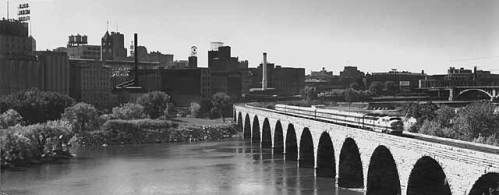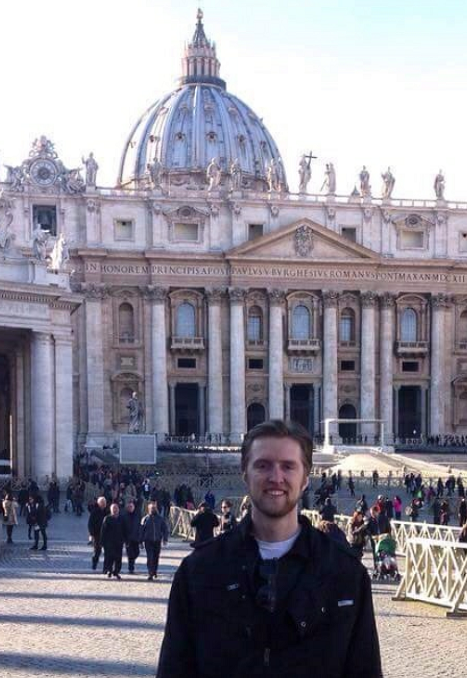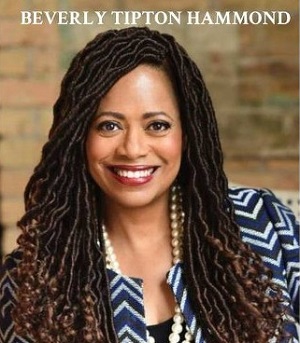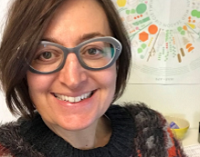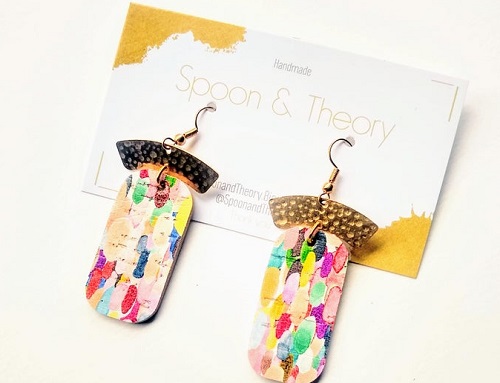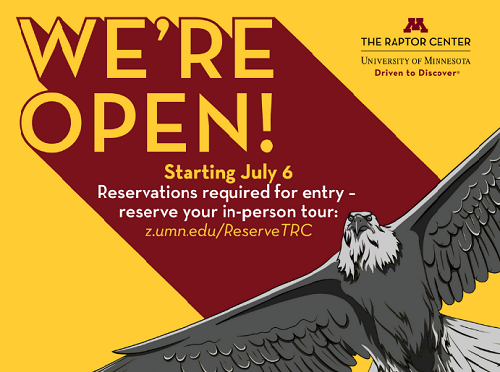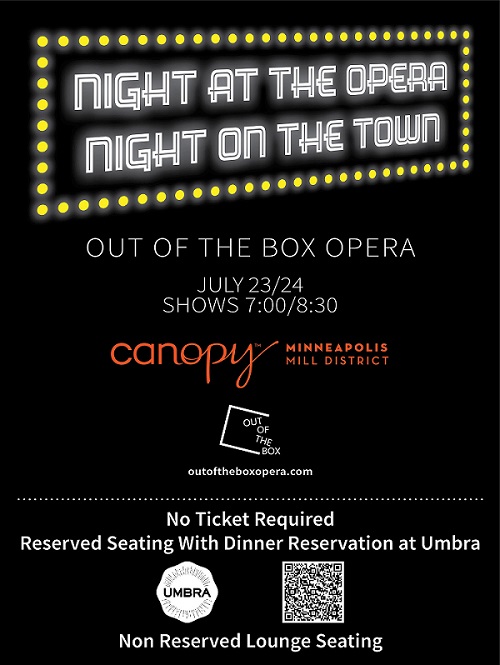The Mill Yard at Stonebridge Lofts Art Exhibit Announces New Summer Show, The Shape of Color
 Tuesday, July 27, 2021 at 11:26AM |
Tuesday, July 27, 2021 at 11:26AM |  Kim Eslinger |
Kim Eslinger | 
The Shape of Color - Aug 8 to Nov 12
Opening Reception Sunday, August 8 4:00 - 6:00PM
Stonebridge Lofts, 1120 South 2nd Street
Join us at The Mill Yard opening reception for wine, beverages, snacks and beautiful art. Local popular food truck, Taqueria Victor Hugo, will be out front selling a variety of Mexican cuisine. COVID Safety: Masks are welcome but not required for those fully vaccinated. Please mask up if you are not fully vaccinated.
The Mill Yard at Stonebridge Lofts
The Mill City. Residents celebrate our area’s industrial heritage of the mighty Mississippi River and the mills. Today, what we see are the most recognizable Minneapolis landmarks. However, this is only part of the story. Rail lines were key to Minneapolis’ growth, and were particularly integral to the Mill District, bringing in wheat and timber and shipping out flour and lumber. We also honor the history of the mills, the reason for the rail yard’s existence. The Mill Yard aims to be both a gathering place for art and artists and a conduit by which art can be shared with and disseminated into the wider community. Contact: TheMillYard.Stonebridge@gmail.com.
* * * * Featured Artists * * * *
 Stephen Capiz
Stephen Capiz
A Minnesota native, Stephen Capiz studied at the Minneapolis College of Art and Design. Back in the 1950’s, as a teenager, he was dumpster diving for treasures and found a book on contemporary art. He was immediately hooked and dove into the world of art. Through his decades of painting he has created both realistic and abstract works. He describes his abstract works as kinetic blurs: “impasto with energy.” “My mission is to create paintings and artwork that are representative of motion in both nature and human form. My abstract paintings…are meant to evoke emotion n and a sense of curiosity, while also providing a sense of energy…almost to the point of violence at times.” Stephen’s abstractions draw the viewer into a personal space of interacting with color, space, shape and motion that ignites fascination. A prolific painter, his works can be found in Hilton and Weston Hotels, and Northwestern College as well as in the hands of collectors around the world. Facebook
 Jodi Reeb
Jodi Reeb
Moving between two and three-dimensional forms, Jodi Reeb is constructing paintings and sculptures layer by layer. She explores the theme of nature’s cycles using photographs as collage, elevated circular paintings, and constructing organic aluminum sculptures. Her photographic works juxtapose geometry with the softness found in nature. Her colorful circular paintings identify with references to the round shape both an organic and geometric form. The attraction for her is the negative space that the circular paintings evoke through shadow and space. She is recently painting with enamel and encaustic (beeswax and damar resin) on primed aluminum, bending and twisting the metal into organic shapes and forms. She is creating wall sculptures that are elevated off the wall oscillating between painting and sculpture. Jodi’s art has been shown nationally and is in many private collections including Wells Fargo Mortgage, Target Corporation, United Health Group, Hilton Hotels. She has a long list of awards, grants, and residencies. Her studio is at Traffic Zone Center for Visual Art where she not only creates but offers classes. Website, Facebook, Instagram
 Neysa Winterer
Neysa Winterer
Neysa Winterer is one of those artists that has tried a little bit of everything from drawing, painting signs, wool sculpture, refurbishing furniture, painting on canvas, watercolor, soft pastels and graphite. All that changed in 2017 when she took a workshop in collage. She had found her perfect medium, little bits of paper. It was a slow process at first starting with small canvases where she experimented and learned what would work best for her. Today she makes detailed and delicate images tearing, cutting, and gluing bits of paper onto wooden substrates. Collecting bits of paper, she has used advertisements, newspaper, vintage sheet music, old mail, used street maps, discarded books…almost any kind of paper she can find! She says you will find her most evenings “working away in her home studio” in Excelsior. November 2020 Neysa had her first big showing entitled “Van Gogh Slept Here.” She recreated master works of Vincent Van Gogh in paper. You will see some of those pieces here. Website, Instagram
 T. Young
T. Young
T. Young’s current work is inspired by the style and compositions of the early to mid-20th century painters working in Hard-Edge, Concrete and Constructivism styles. Working out of her studio in the Northrup King Building, she has recently been creating canvases with vinyl emulsion paint, blending color with shapes and lines that construct story narratives and geometric movement. Although her main medium is acrylic paint, her vast collection includes paintings combined with oil pastels, spray paint, ink, graphite, watercolor, gauche or chalk pastel. A native of Minnesota, she has studied and practiced art using a variety of forms and materials over the past 35 years. “I enjoy a pace of painting that creates clean and simple compositions as I feel this creates a balance in the often messy and complicated times we live in.” Website, Facebook, Instagram
